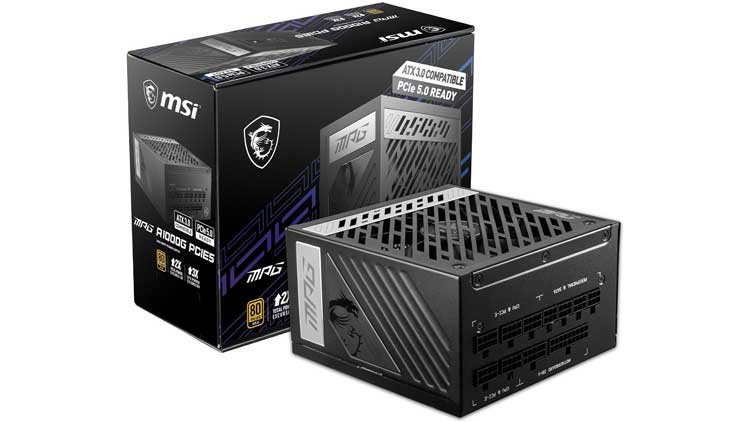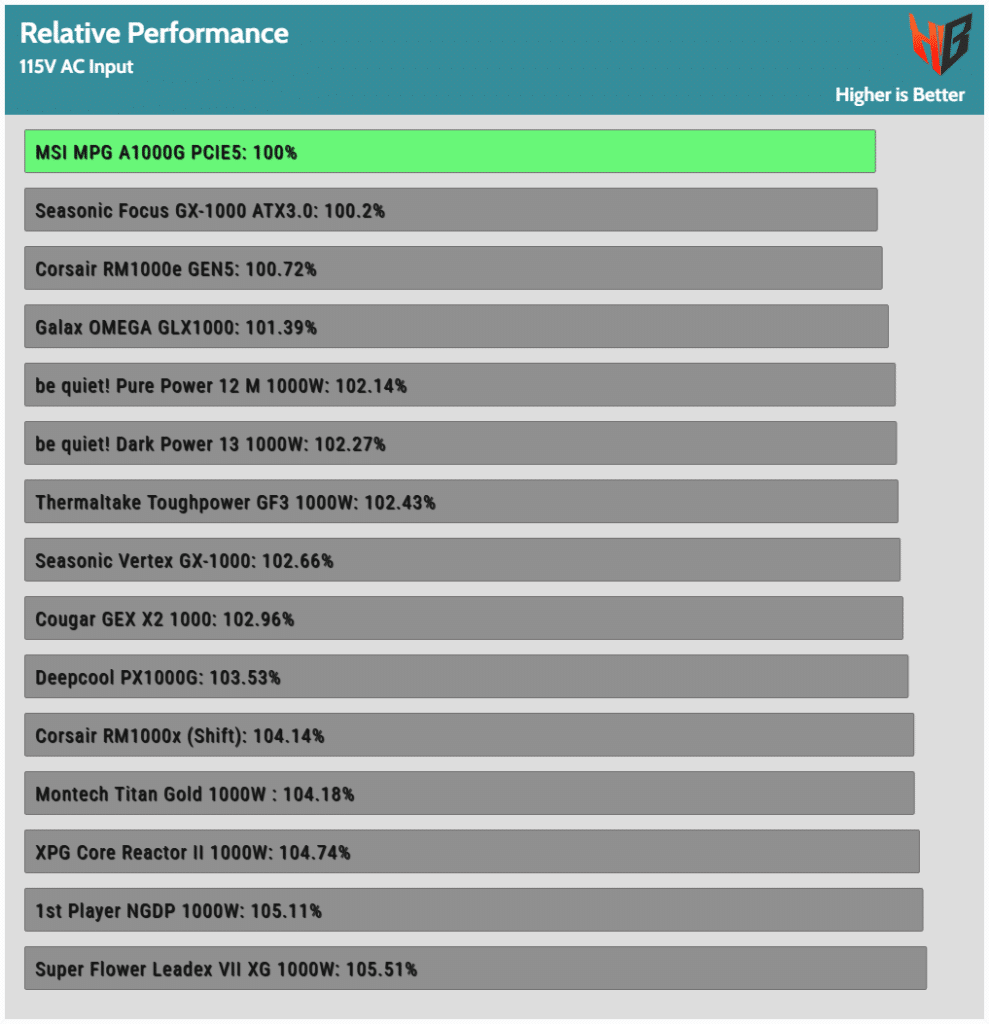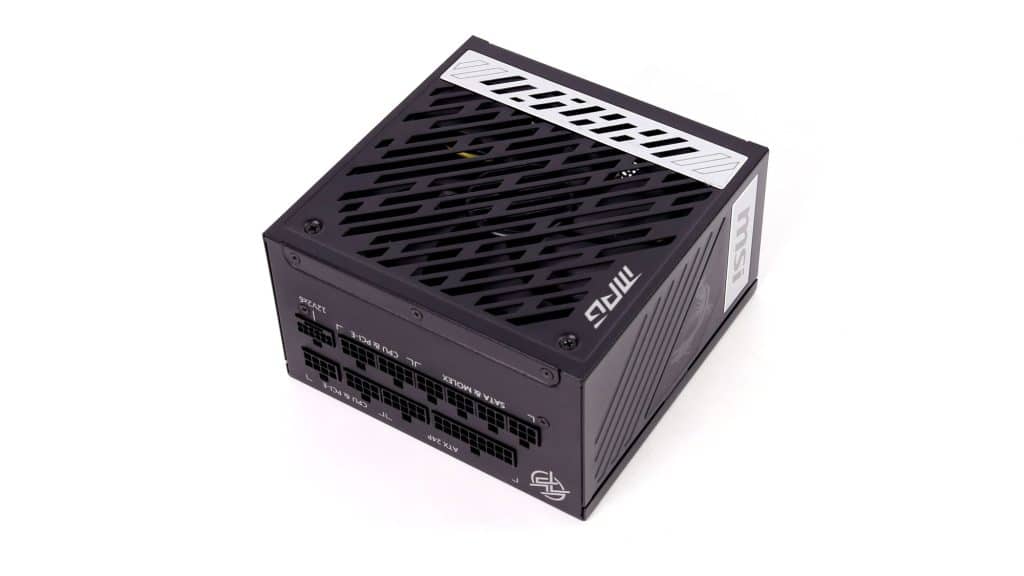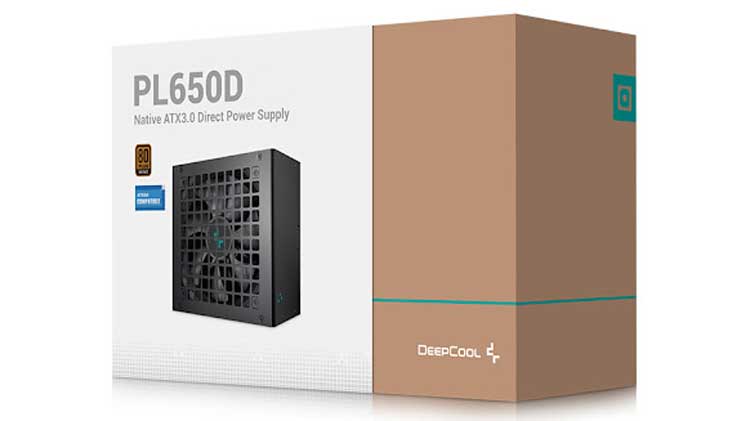Epilogue
The MSI MPG A1000G PCIE5 is sold at a fair price, but the competition is fierce in this category. Although it uses the same platform as many competitors, it stays a bit behind in overall performance because of the not optimal ripple suppression performance. Changes in selected parts can bring notable differences in performance. Moreover, I would like to see lower voltage drops at 12V in normal transient response scenarios, and the same goes for the 3.3V rail but in ATX v3.x transient response loads (which are extremely high).
A funny fact about this PSU is that although it is advertised as ATX v3.0, it is indeed ATX v3.1 compliant. This is good and not so good at the same time. You will be wondering right now how that can be possible. Well, let me explain. It is good because it has the new 12V-2×6 header on its modular board, which offers enhanced protection compared to 12VHPWR. On the contrary, the newest ATX spec (v3.1) is looser in its hold-up time requirements than the previous one (ATX v3.0). This means that because of the lower than 16ms power ok signal hold-up time, the MPG A1000G PCIE5 doesn’t meet the ATX v3.0 requirements, but it meets the corresponding requirements of the ATX v3.1 spec. It seems some companies managed to convince Intel that a 17ms hold-up time and a 16ms power ok hold-up time are too long, and it replaced them with 12ms and 11ms, respectively, requirements, which I find a step backward.
The MSI MPG A1000G PCIE5 has a fair price tag of 160 dollars, but the Thermaltake Toughpower GF3 1000W, based on the same platform and offering higher performance, is 10 dollars more affordable. Nonetheless, the Toughpower GF3 1000W has a more aggressive fan speed profile, making it notably noisier, especially at high loads. The best choice in the 1000W category, using CWT’s CSZ platform, is the XPG Core Reactor II 1000. It costs $148, making it the most affordable of the two above while offering better performance and lower noise output.
To check all alternative PSU offerings, read my Best ATX v3.x PSUs article before investing in a new power supply. You help me a lot by using my affiliate links, which don’t increase the product’s price. I get a commission from Amazon every time you do it, which can make a difference for me, especially now that I am on my own, working exclusively for my media and not for someone else.
Other similar spec 1000W PSU reviews:
- 1st Player NGDP 1000W
- Corsair RM1000x Shift PSU Review
- Corsair RM1000e (2023) Gen5
- Cougar GEX X2 1000W PSU Review
- FSP Hydro Ti Pro 1000W
- Deepcool PX1000G PSU Review
- Montech Titan Gold 1000W PSU Review
- MSI MEG Ai1000P PCIe5
- Super Flower Leadex VII Gold 1000W
- Thermaltake Toughpower GF3 1000W
- Delivered full power at 47°C
- ATX v3.1 and PCie 5.1 ready
- 12V-2×6 connector (600W)
- Silent at up to 580W (at normal ambient)
- High build quality
- Conservatively set protection features
- Highly efficient at light and super-light loads (115V input)
- Within 1% load regulation on the primary rails
- Low inrush currents
- Low vampire power
- Quality, FDB fan
- Alternative Low Power Mode (ALPM) compatible
- Fully modular
- Ideal distance between the peripheral connectors (150mm)
- 10-year warranty
- Overall efficiency needs a boost
- Not impressive overall performance
- Over 30 dBA average noise output
- Mediocre transient response at 12V and 3.3V (normal loads)
- 5VSB rail is not so efficient






MSI MPG A1000G PCIE5 or Corsair RM1000x (Shift)?
Corsair
Semms that MSI “tweaked” internals from previos batches, for example by removing high-voltage APFC capacitor.
https://ithardware.pl/testyirecenzje/test_msi_mpg_a1000g_pcie5_zasilacz_atx_3_0_w_dobrej_promocji-29226-4.html
Tweaked or lowered the cost and performance 🙂
Hi Crmaris !
Can you explain why you choose rm1000x shift over A1000G who seem to be great aswell ?
On the site in best 3.0 the MSI MEG Ai1000P is the second in Best Overall Performance (230V)
On amazon the rm1000x shift is 200€ while A1000G is 160€, in this case what would you choose ?
And there is Thermaltake Toughpower GF3 at 166€ too, between this 3, what can I go for having the best for many many years ?
Thanks
The Ai1000P is not the same as the A1000G.
If the shift is so expensive, then it doesn’t make much sense to proceed with it unless you want the side modular panel.
Otherwise, you could go with the A1000G or the GF3 either. Look also at the GF A3, which is also good and affordable.
Thank you for the work you do. I bought the previous power supply 10 years ago, now I have upgraded to NVIDIA 3070, I want to change the unit, but I don’t understand whether it’s worth waiting for version 3.1. I would like to take a power supply with a reserve, if we talk about video cards, so that it will be enough for 2-3 generations. Options I’m considering
Super Flower Leadex VII Gold 1000W
DeepCool PX1000G 1000W
be quiet! Pure Power 12 M 1000W
Or should I still wait for version 3.1?
Super Flower Leadex VII Gold is already 3.1 since it uses 2×8 pins on its modular panel, not 12VHPWR.
Are these all versions of this power supply, or from some kind of p/n or revision? What can you say about the quality of this block?
Thanks a lot for this refreshed version of one of the first premium atx 3.0 psu, kinda sad to see it’s not improved so much. Any chance to review or have a comment on the atx version of the Corsair hx1500i, very much appreciated!
THIS IS FALSE! THE MODEL THAT HAS THE 6×2 is MAG A1000GL PCIE5
Did you see the photos of the PSU in the review? Check the power spec label where the model number is written.
Do you know if there is any way to discern on the box if it’s the old or new version? It seems to be quite the lottery right now depending on if the retailer has old or new stock (or a mix). I haven’t been able to figure out the manufacturing date by the serial number yet.
Sorry, I don’t have a clue on that.
That doesn’t sound true. Super flower only offers an adapter like connection with its 2x8pin, furthermore it lack sense connectors on both sides of the cable.
How is it 3.1 without any sense pins?
which sense pins you are refering one? the optional ones? The ones that no GPU has the corresponding circuit, which are OPTIONAL for the PSU?
The only required sense pins are the ones to set the max power of the 12+4 pin cable.
From another detailed review I found:
Interestingly, the 12VHPWR – cable is made in the form of an adapter to conventional PCI-E connectors. 12-pin pad is connected to the modular board of the BP through two 8-pin sockets, each with six wires. NVIDIA adapters usually have three or four 8-pin contacts, but they are connected via cables, and here the connection is directly to the modular connectors, which in theory should withstand a load of up to 600 watts.
According to the manufacturer, this method of connection is made intentionally, to increase the reliability of contacts from the power supply, in order to avoid possible problems.
Signal wires are not connected in any way, two wires (SENSE0 and SENSE1) are removed from the pad and simply isolated near it, which gives a signal to the video card about the maximum thermal budget of 600 watts.
It becomes clear that compatibility with PCIe 5.0 is purely nominal, the power supply is simply equipped with a cable-adapter on the connector 12VHPWR.
There’s no doubt that Super Flower’s shoppers will be there. First of all, they’re fans of the brand releasing power supplies on its own original platform. But they’d probably like to see full PCI-E 5.0 support with all the signal lines provided by the standard (SENSE0, SENSE1, CARD_PWR_STABLE and CARD_CBL_PRES#), or at least the first two.
so my review wasn’t detailed enough I guess 🙂
I sense sarcasm, but unless they got a different review sample, the claim is that this PSU is lacking any signaling an up to date PSU should have.
In your review you say only CARD_PWR_STABLE and CARD_CBL_PRES# are missing and that’s for most of the PSUs
why is this not an issue? if one buy a PSU in 2024 why shouldn’t they care about sense 0, sense 1 missing? am I not getting fooled if a new standard is out and recommended and I buy something that is already obsolete?
Hello broski!
What sayeth you about the EX1200R-PL from (((Silverstone))). Should I pull the trigger on the yahudling PSU?
Thank you and God Bless!
Hi there! We tested that on Cybenetics already and my colleagues didn’t report any issues so it is ok to buy it!
Here is its report: https://www.cybenetics.com/d/cybenetics_R1n.pdf
I recently bought the 850W version of this PSU and i do have the 12V2x6 marking. Does this automatically mean that i got new ATX 3.1 PCIe 5.1 revision with proper new connector? Or this is “fake” marking like in the MSI 850GL reviewed here and in fact it still uses the old 12VHPWR?
Look at the four sense pins of the connector. If they are deep inside the socket you have 12V-2×6 indeed, but if they are close to the edge, then it is 12VHPWR.